Analyzing keyword intent is an important step in the keyword research and content planning process for a variety of organizations.
Why?
Because every well-established and growing company needs to get noticed, in order to appeal to their target audience.
Digital marketing is like dating — you’re not going to ask someone to marry you on the first date, right? Organic search is usually the “first date” a user has with your brand’s website. Writing high-quality SEO content with a keyword intent strategy is a main ingredient to successfully acquire new visitors to your website.
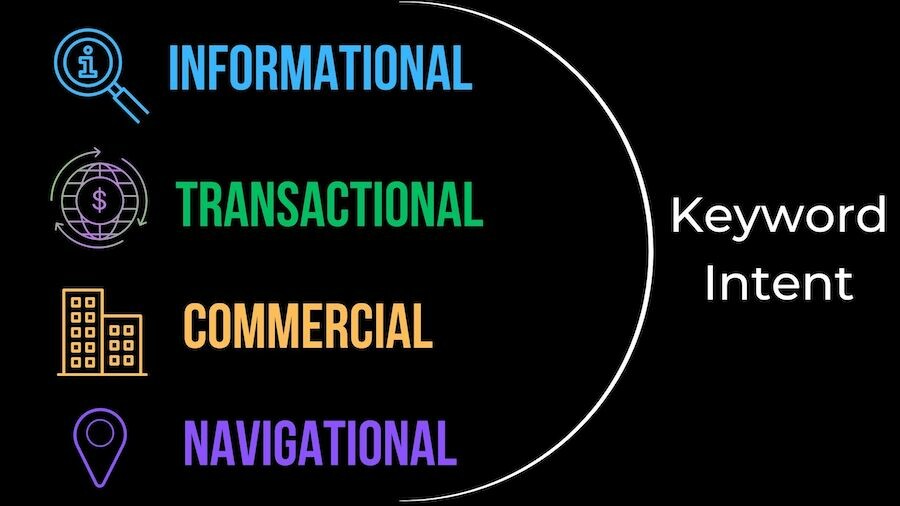
Related: 3 Keyword Research Tips: How To Write for Humans, Not Bots
Most people are actively researching something and are searching for answers on Google. This is your chance to put your website and brand front and center and be the solution to all their problems.
And you know what, they might go on a second date with you … or uh, come back to your website and buy your product or service.
What is Keyword Intent?
Before I talk about how keyword intent ties into your overall SEO strategy, let’s discuss the meaning of keyword intent.
Keyword intent ties into search intent, which is defined as the purpose of a user’s search. The goal is to focus content exclusively around topics with specific search intent or keywords during several stages throughout the conversion funnel. When coming up with content, it is important to not focus on keyword stuffing. In case you have not heard about this SEO technique, it is when SEO professionals put in as many keywords as possible to help their organizations rank higher in Google and other search engines. It is better to be more strategic with your organic keyword research and content whenever you focus on intent.
Have you found yourself using Google to look up the name of that one film that you forgot the title of or to find which team won the most recent Super Bowl? Admit it — we’ve all forgotten stuff like this plenty of times. As you look within a Google search for these answers, that is defining your search intent, which is where planning a keyword strategy with intent comes into play.
What Are the Four Main Keyword Intent Types?
There are four main keyword intent types that strengthen your digital marketing and SEO strategies for your company.
All of these keyword intent types are easy to understand and should not take long to master. Let’s divide the four types of keywords into low intent and high intent keywords. Low intent keywords live at the top of the funnel (TOFU) and typically involve people reaching information on a specific product or service offering and are looking to answer a broad question with a search query. High intent keywords exist more towards the middle and bottom of the funnel (BOFU) topics and typically lead to sales and transactions.
Low Intent Keywords
1. Informational:
Informational intent revolves around the intent of looking for the answers for specific questions. The queries with informational keywords feature interrogatives, such as “when is” (for example, “when is the latest superhero movie being released?”) or “how many” (a particular example being “how many books were written by John Steinbeck?”).
This type of keyword search intent is important to any digital marking campaign because it’s usually low lift content that can be generated at scale.
Everyone (and usually the typical Google user) has questions and most likely they are searching for topics with informational keywords related to your product or service offering.
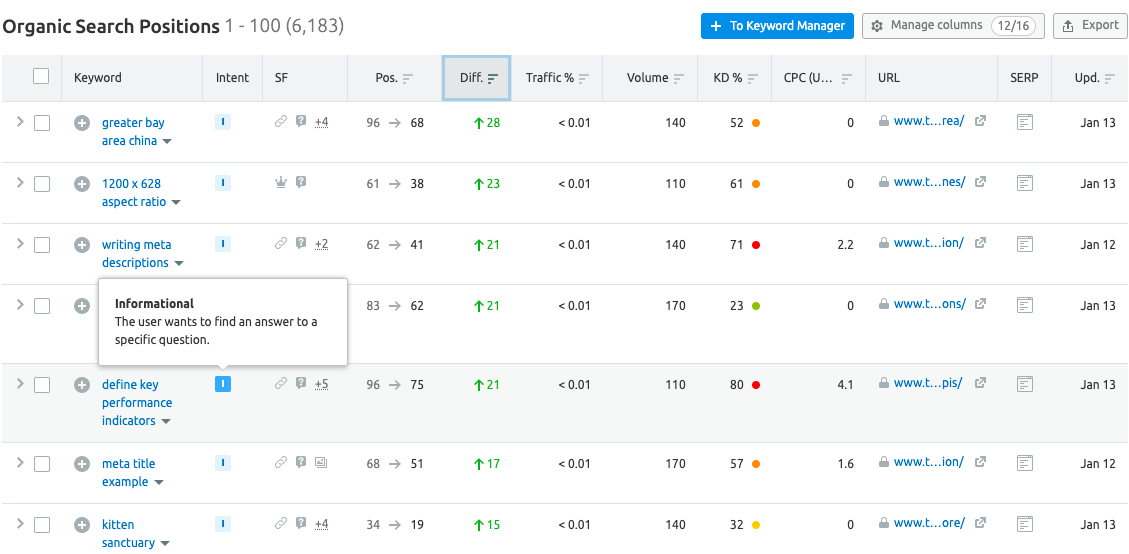
Another benefit to a low informational intent keyword strategy is that when you answer general questions your content may appear in the featured section in Google’s Search Engine Results Page (SERP) also known as a Featured Snippet. Creating a FAQ page is another option that can answer both easy and difficult questions about your business and generate Featured Snippets for maximum visibility.
2. Navigational:
Navigational intent is when users are looking for particular pages or websites. Branded navigational keywords are the focus of this. An example is if a person typed in “Buy discounted Disneyland tickets” instead of typing the company’s website (because you’re looking for some discounted tickets, aren’t you!) or “TEAM LEWIS”, instead of teamlewis.com.
These high intent keywords can be used for keyword intent SEO, with detailed title tags featuring brand names as well as featuring navigational intent in meta descriptions and headers as well. Incorporating this intent type is fairly simple and straightforward and is a good way to appeal to users who could be interested in your brand.
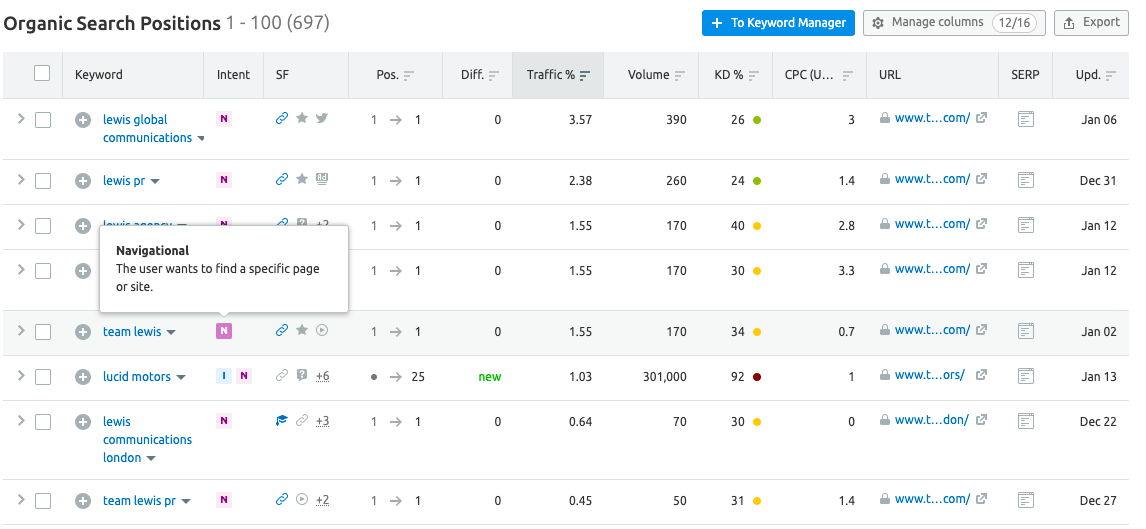
Figuring out the questions your users are asking means you will have to put yourself into the minds (not literally) of your target audience.
In order to be user-intent friendly, think about what you are selling and some of the main questions that your audience will be actively searching for.
Remember, there’s no such thing as a stupid question, or search query, so consider answering both obvious and out-of-the-box inquiries when incorporating navigational keywords.
High Intent Keywords
3. Transactional:
Want to get married?
Transactional keyword intent happens when users are hoping to complete actions. Examples with this type of SEO transactional keyword include “Italian restaurants that offer takeout,” “Buy a Ford Bronco,” and “DVDs and CDs for sale.”
Building and optimizing service and product landing pages are key for letting a potential customer find and complete actions involving transactions and conversions. Examples of transactional Calls to Action (CTA) include various forms of buttons that say “Buy Now,” “Sign Up” or “Add to Cart.” When it comes to high transactional intent keywords, every landing page must have an effective CTA, a visually appealing design and a product description that help make your brand trustworthy and reliable. All of these elements can inspire potential customers to go through the content marketing funnel.
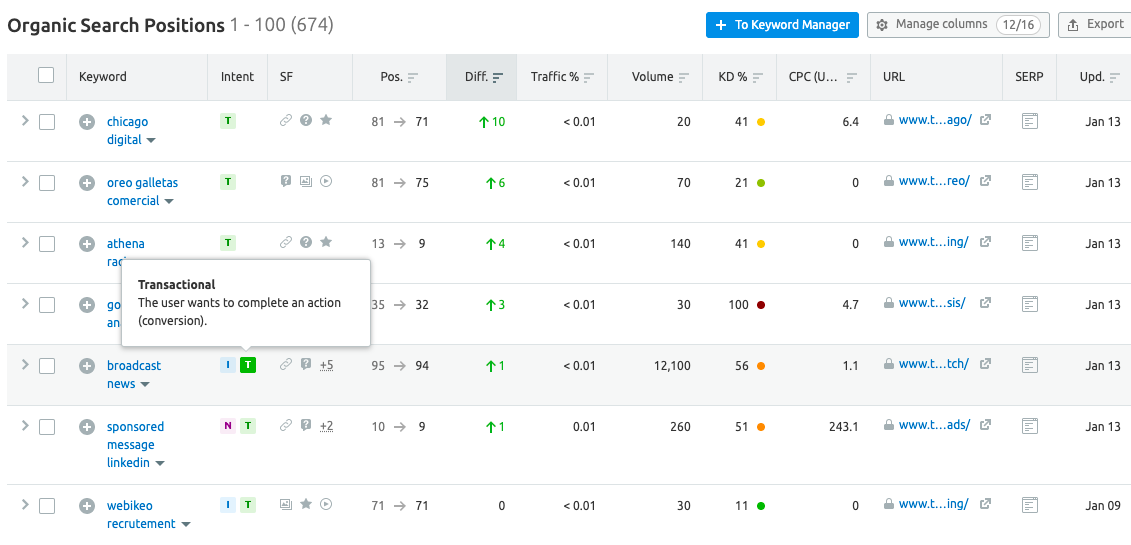
4. Commercial:
High commercial intent keywords are similar to transactional intent keywords, and include keywords that typically involve products. Some examples of high commercial intent keywords are “free Coca-Cola,” “The Beatles box set reviews” and “MacBook Air vs MacBook Pro.”
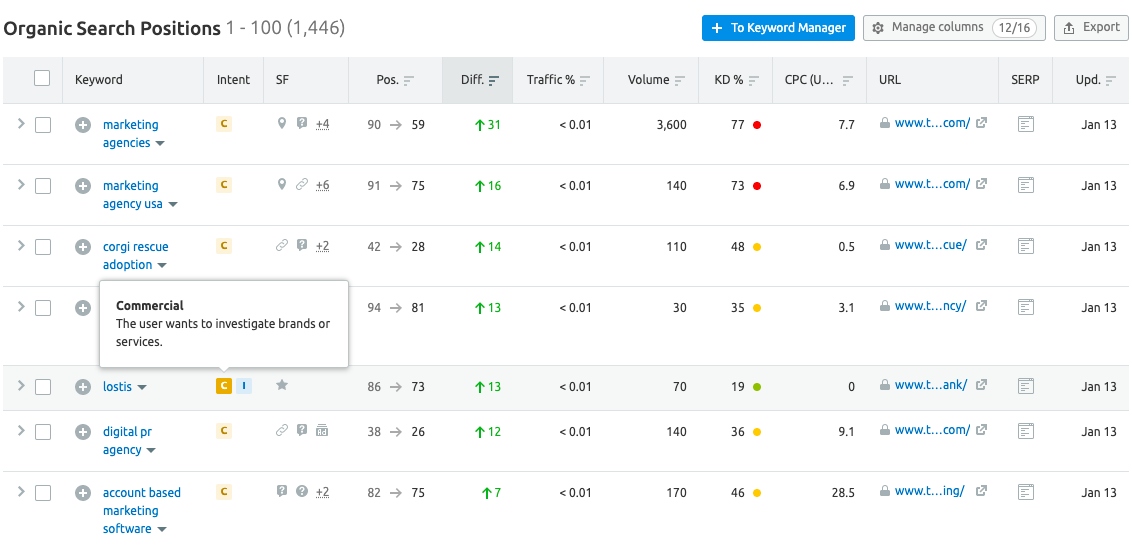
Why You Should Care About Keyword Intent
Content that is more relevant leads to stronger CTRs and keeps users on the page, lowering your website’s bounce rate. Lower bounce rates are a quality ranking signal to Google which helps you rank higher. Having quality content that is highly relevant gets users interested in exploring other pages on your site. Increasing behavior metrics on your website like page views also contributes to your website’s “rankability.” Creating content that specifically appeals to the viewer’s intent and search query will make them want to view more pages throughout a website.
The more specific the content, the better chances you have of connecting with all kinds of possible customers.
The ranking factors, relevance, authority, and user experience (UX) can be positively affected by keyword intent.
Authority is equally important as relevance since it establishes your organization as an authentic brand that users want to connect and interact with online. While backlinks, internal linking and informative content are great ways to build authority, acknowledging and addressing all four keyword intent types in your SEO content strategy will do wonders for your authority, for both users and Google itself.
User experience is pretty straightforward in that it focuses on whether potential customers are interested in what you have to offer. If you provide plenty of relevancy for users, and they view your responses to keyword intent as high-quality, then you have a great shot at being a company with loyal customers.
How Can I Use Keyword Intent To Create New Content for SEO?
Building content with keyword intent for SEO is especially effective when a content marketing strategy is focused on very distinct content that aligned with your funnel strategy and internal KPIs.
Also, if your content responses are very specific and structured, Google will realize that your topics and intent-focused pages tie into online queries. Your pages can be shown to a lot more people and you will achieve what you always wanted — popularity, revenue, or, as in our previous scenario, getting married!
How To Use Keyword Intent To Get a Featured Snippet in the “People Always Ask” Answer Box on Google
Utilizing schema markup helps Google understand your content better and gives you a big shot at ranking in the featured snippet “People Always Ask” answer box in the SERPs. This is particularly helpful for informational keyword intent since you can practice writing responses with plenty of testing for the PAA box.
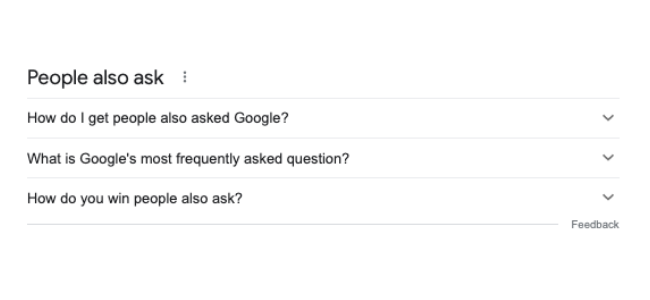
With just a little bit of user intent keyword research, you can become a pro at using all four keyword intent types, which will help you achieve your company’s business goals — whether you work for a big brand or are part of a startup company in good ol’ Silicon Valley.
Need a boost with your content strategy? Check out our SEO services and content marketing services and let’s chat!




